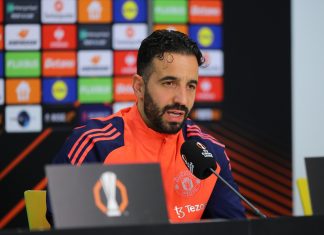Having seen how the club came into existence, the second in this two part feature looks at the club’s progress through the lower leagues and their rise to the top of the Blue Square Premier League, as well as the club’s plans for the future, including the intention to build a new stadium if they establish themselves in the Football League.
For a club aspiring for promotion, you might think 111 points would be enough. Generally, you’d believe 90 points would be enough (unless you’re Real Madrid, who finished with 97 points last season and still didn’t win La Liga). This was the points tally that AFC Wimbledon produced in their first season in the Combined Counties League, yet still somehow they did not win promotion, due to the impact of rich businessmen inflitrating the lower leagues. The Chelsea and Manchester City of the Combined Counties league combined to ensure that AFC Wimbledon’s points tally was good enough for third place only, as Erik Samuelson, the club’s Chief Executive, recalls.
“Two of the teams in that league had money pumped into them – Withdean 2000 and AFC Wallingford.” It seems sugar daddies don’t just prop up the Premier League’s leading clubs. Withdean and Wallingford have both hit on harder financial times now.
Wimbledon won the last 15 games of that season, and these formed the first 15 of 78 games unbeaten for the club, a remarkable all time English record that saw them rise to the Ryman Premier Division. Despite such an impressive run of form, AFC Wimbledon managed to go through three managers over the course of that run, one being sacked for non-football reasons (Terry Eames) and the caretaker Nicky English was unsuccessful in convincing the club to keep him on at the end of the 2003-2004 season. Dave Anderson then took over, and he stayed with the club until 2007.
Anderson was eventually replaced by Terry Brown, who oversaw the club’s rapid rise into the Blue Square Premier League. Now of course, Wimbledon sit on top of the Blue Square Premier Division, a point ahead of Crawley Town, though having played a game more.
The club have a golden opportunity to reach the Football League, which can often bring complications. Samuelson is confident that they should be able to rise into the league without too much difficulty, though he is aware that there is still work to be done.
“We know what we need to do to comply with the football league’s standards. In terms of physical structure we are 90% ready and have plans for the rest including relevant planning permission. We do need to expand our infrastructure.”
A trip to the Kingsmeadow stadium that they share with Kingstonian tells a story in itself. It is a very small ground without a great amount of space. The small corridors of the ground emphasise the difficulties that AFC Wimbledon will encounter when they get to the Football League with a ground of this size. As well as looking to increase the number of staff in order to comply with the regulations of the League, the club are constantly looking at other ways that they can improve the way they run things.
Yesterday’s opponents, Stevenage Borough, have been particularly helpful as a model for AFC Wimbledon to learn from. Stevenage had their own problems getting into the football league in the first place. Samuelson tells me that they always look a league or two above and see what they do, and that they want to be perceived to be run as well as a Football League club, which he assures me that they are.
Samuelson is less optimistic about rising through the leagues as rapidly as the old Wimbledon. As he puts it, their current ground is not a stadium for the Football League, though it will do in the short term. In the long term, they are keen to build a new stadium in order to satisfy the need for more space and hopefully for bigger crowds.
The club are also ready to strengthen the squad should they get promoted. With an average age of just 22, Wimbledon lack experience and require some older heads to compete in the football league. In their recent game with Crawley Town, the entire defence (including goalkeeper) had a combined age of 98 (19.6 on average).
AFC Wimbledon is a club on a steep upward climb through the league hierarchy, and if they don’t make into the League this year, it is likely that they will in the coming campaigns. When they do, there is every chance that they will at some point pass the club that will forever be known in these parts as ‘The Franchise.’ If they do, there is unlikely to be the kind of gloating that you may expect, or that may come from rival fans sympathetic to the South Londoners’ cause. As Samuelson says, winning doesn’t prove anything, particularly when the old Wimbledon was wrenched from the grasp of its fans in the manner that it was. The new Wimbledon may rise through the leagues back to where they spent their the 80s and 90s, but the wounds of what happened after that are unlikely to ever heal.







